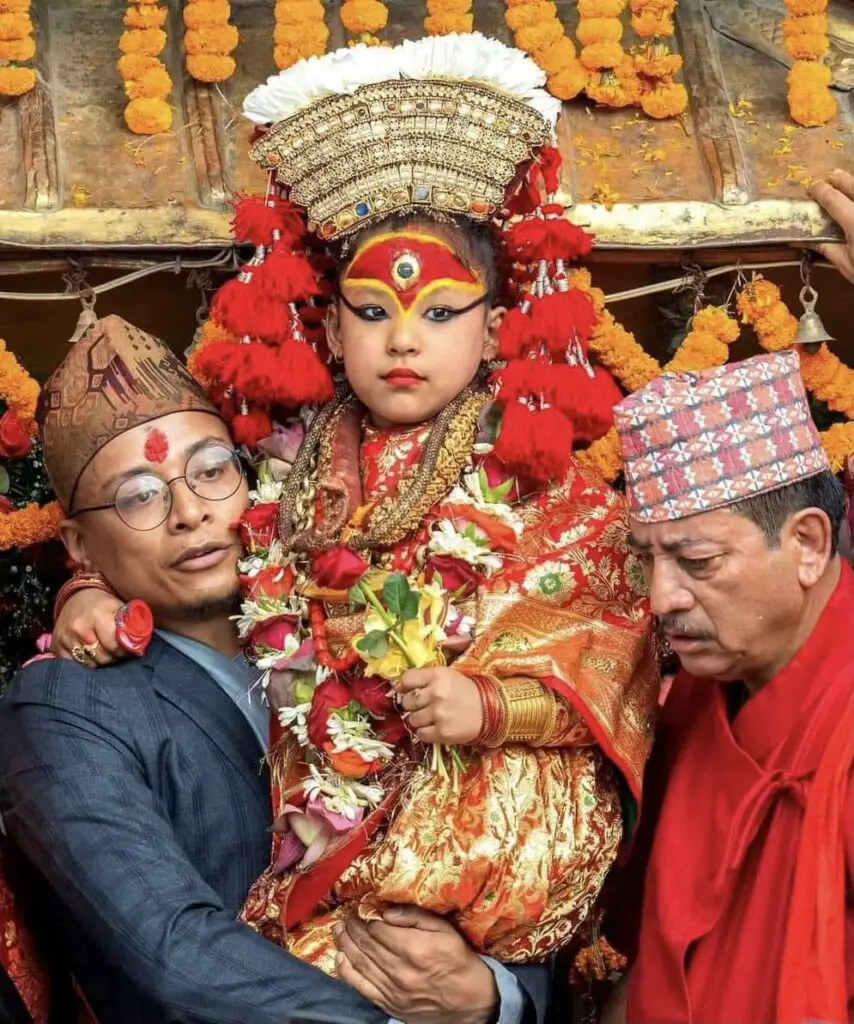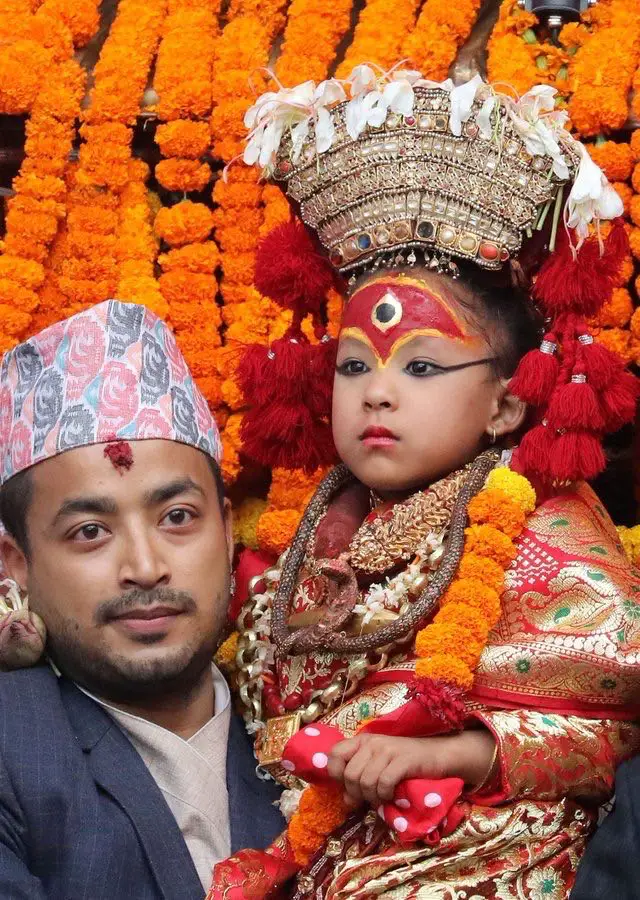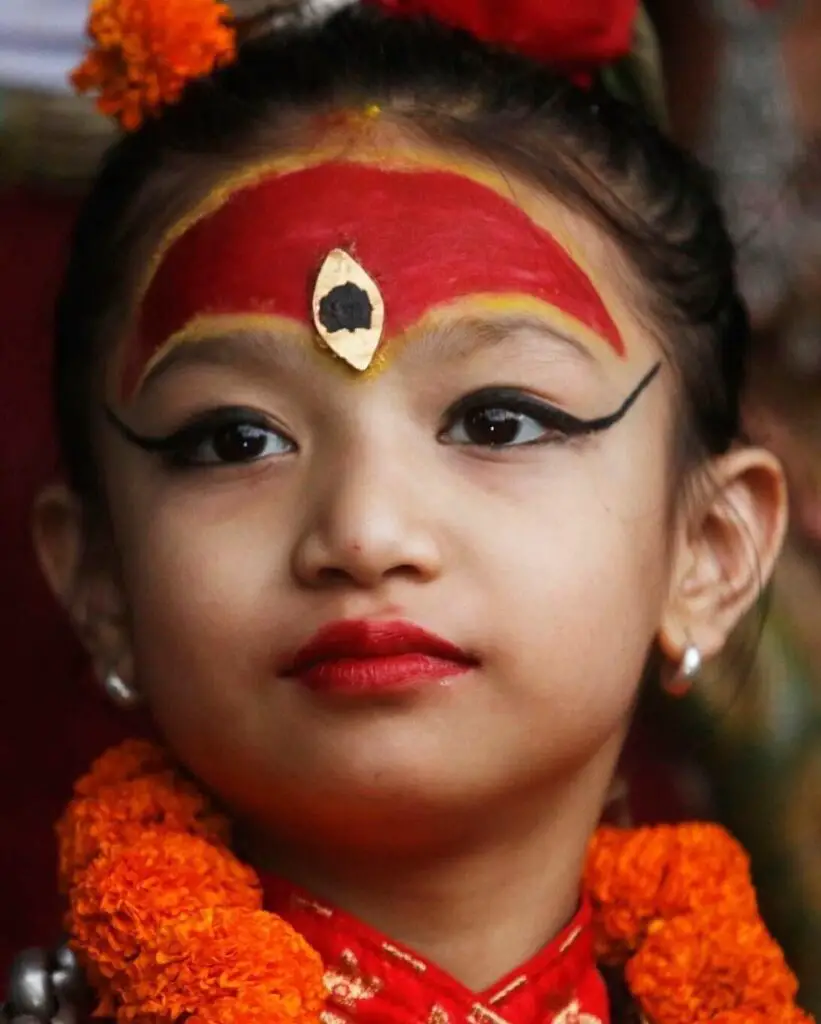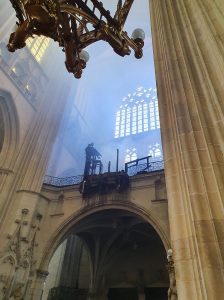In Kathmandu, CEN Asia Editor Shantanu Guha Ray met the living goddess and sought a boon

It is late afternoon and hundreds, mostly foreigners, jostle for space in the courtyard of an ancient home dotted with intricate wood carvings of Hindu gods in Kathmandu’s Durbar Square.
Everyone waits with bated breath, looking upwards at a window decorated with unique Hindu symbols. Outside, pigeons repeatedly complete the flight of life, pesky travel agents sell picture postcards and rudraksha necklaces.
It is the home of Kumari, or the incarnation of the fearsome Hindu goddess Durga.
She is Nepal’s living goddess who has got the throne after beating hundreds of other girls and being screened for 32 qualities of perfection by the highest priests in the land.
She is one of Nepal’s most famous tourist attractions, ranking alongside Mount Everest and ancient temples of Lord Shiva and Lord Buddha in Kathmandu.
It is a strange job that entails living in an ornate cloister, appearing twice a day for visitors and riding a golden chariot at religious festivals and eventually retiring young with a small pension.
It is indeed a strange, lonely Many bring gifts that include Snicker chocolates, Barbie dolls, and marigold flowers. Once, her feet did not touch the ground. That has now changed. Once she did not study but now, a teacher visits her every afternoon.
“These are winds of change sweeping the home of the goddess,” says a woman selling postcards at the entrance of the home of the goddess.

Dressed in red and bedecked in gold jewellery and silk clothes, she appears twice a day to bless the crowd. She only stares. She does not smile, weep or talk. It will all bring misfortune. Only her blessings work.
Once she wept, June 1, 2001, and Nepal shuddered with fear, it was viewed as a terrible omen. And then, the same day, the crown prince of Nepal killed nine members of the royal family, including his parents, King Birendra and Queen Aishwarya, before shooting himself.
“It was a strange coincidence,” says Bijay Amatya, a top tour operator.
Many in Kathmandu claim the goddess caused the 2015′s devastating earthquake that killed over 9,000 and destroyed property worth $10 billion, which was nearly half of the nation’s GDP then. Locals believe the earthquake happened a week after the Kathmandu’s City Museum exhibited a likeness of the living goddess with a condom packet for the red tika on her forehead. Believers saw the earthquake as an act of retribution from the goddess.
For the masses, her life is kept hidden. It is like the secrets of the Vatican, unless the goddess chooses to reveal everything after she leaves the throne. But it does not happen. Her real family visits once a week, her friends are the caretaker’s family.
There are 12 Kumaris in the Kathmandu Valley, all considered goddesses but only three are most important. Once a Kumari attains puberty, she loses the divine status and selection for another Kumari begins. Her life is kept hidden, unless she chooses to tell you about it.

And when she is no longer a goddess, she can get into torn jeans and smartphones. But some superstitions linger in Nepal, among them a superstition that any man who marries a former goddess will suffer a premature death. Very few men are willing to contemplate such a fate, claim locals.
On the throne, she sits for six hours at stretch. She goes nowhere, not even to the restroom. The locals call it the power of the god, she is completely calm. After all, she is not a normal child. It is believed her blessing sustains peace and prosperity for this Himalayan nation, and its people. Every year, she is taken out of her temple to participate in several festivals.
It is written in the scrolls of the ancient Nepalese kings that goddess Taleju would often visit the palace to play games of cards with members of the royal family. Once she got upset and disappeared. After several prayers, she asked the king to choose a young Kumari for her to possess so that the people could continue to worship her.
The Kumari tradition started in the year 877 in the Newari calendar, which is 1757 AD. Many claim the last king of the Malla Dynasty used to meet with the goddess Taleju, but nobody was allowed to know about it. One night, the queen secretly followed the king. The goddess got annoyed and vowed never to meet the king again. The king pleaded with her to return. He needed the goddess’s protection. The goddess told the king to find a “pure” girl from the Shakya family, the Newari’s highest caste, who she would manifest in. The custom grew from there.
Both Hindu and Buddhist devotees worship the Kumari. “It is a strange feeling,” says Saajana, a top executive at a plush hotel in Kathmandu.
The goddess is selected in a decade or so. The process begins with a call for nominations through 16 monasteries across Kathmandu.
On the eighth day of the festival of Dashain, which is celebrated to commemorate the day goddess Durga killed demons, the chosen girl faces a dark room. Though it is not clear, many call it the dark room of horror and say it is filled with freshly severed buffalo heads. And if she is calm and she does not cry, she’s believed to be the true goddess.
And then, almost immediately, her parents leave her at the Kumari house. Inside her special home, the goddess acts as a syncretic symbol between Hinduism and Buddhism.
It is a strange life but no one complains. In Nepal, it is all about faith and the power of the goddess.



